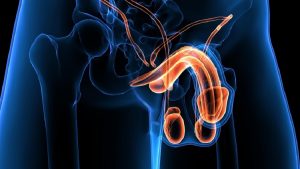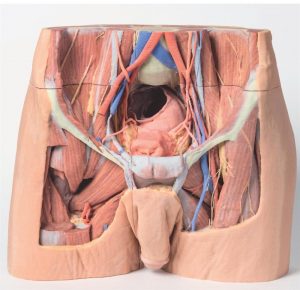Penile injuries more often occur in the foreskin, head, corpora cavernosa and can be combined with damage to the scrotum.
The variety of injuries and injuries to the male genital organs is amazing. Mainly:
tears or tears of the frenum;
cut, puncture or bite wounds of the penis;
bruises;
subcutaneous rupture of the corpora cavernosa;
dislocation of the penis;
infringement of the penis;
damage to the scrotum;
testicular torsion, etc.
Types of injuries
The most common type of minor damage to the penis is a zipper pinching the skin. Despite the small surface of the wound, it is very painful. In order not to rip up the wound when trying to open the lock, it is best to trim the zipper below the squeezed skin so that the zipper opens on its own.
Excessive friction is one of the causes of damage to the penis. Such problems most often arise in passionate lovers and men who are beginning to have sex life. The former are characterized by relatively deep skin lesions, after which scars remain. For the second, ruptures of the folds of the foreskin are typical.
In men with congenital short frenulum, the frenulum of the penis may rupture or tear during intercourse, accompanied by pain and bleeding.
A very peculiar type of damage to the penis is its infringement, which is observed, for example, when the penis is pulled with a thread, wire or cord, when putting on ring-shaped objects. In children, such injuries are the result of pranks, and in adults – the result of masturbation, an attempt to maintain an erection or prevent urinary incontinence.
There are even several known cases of serious injury to the penis as a result of its insertion into the hose of a vacuum cleaner. In this case, the main problem was the thrombosis of the vein of the penis.
In a particularly unfortunate situation, you can even get a fracture of the penis, when it does not enter the vagina during intercourse, but hits the woman’s thigh or pelvic bones with force. In this case, a click is heard, and the penis becomes blue or black due to hemorrhage.
A dislocated penis can occur in the same situation as a fracture, due to a rupture of the ligaments that fix the penis to the pelvic bones. At the same time, the cavernous bodies are displaced under the skin of the scrotum, perineum (the penis is felt as an empty bag). After the penis is repositioned, stitches are applied to the torn ligaments.
In addition, due to trauma to the penis with rupture of one of the corpora cavernosa, cavernitis, an inflammation of the cavernous bodies of the penis, may develop.
If the penis is continuously in a state of erection for an abnormally long time (from several hours to several days), then this is already the result of circulatory disorders. In this case, the erection does not stop, and the person experiences severe pain. This is due to the rupture of an artery passing inside the penis – as a result, a large amount of blood flows out, but no outflow occurs – this rather serious disease is called “priapism”. By the way, men with diabetes and sickle cell disease are prone to priapism.
In case of infectious and inflammatory diseases of the urethra (urethra) or after rupture of arteries or spongy tissue of the penis during the healing process, scars can form, which not only lead to disturbances in blood flow, but also prevent uniform tension of the entire penis. In a normal state, soft tissues expand in all directions, and in the presence of scar tissue in this area, tissue expansion does not occur. As a result, Peyronie’s disease https://en.wikipedia.org/wiki/Peyronie%27s_disease develops, the result of which is a curvature of the penis during an erection. When he is in a relaxed state, this curvature is hardly noticeable, however, with the appearance of an erection due to severe mechanical disorders, sexual intercourse is often impossible.
In children, against the background of sudden movements, jumps, falls, testicular torsion can be observed, which occurs due to the underdevelopment of the ligament that fixes the testicle to the bottom of the scrotum, which is manifested by its excessive mobility.
